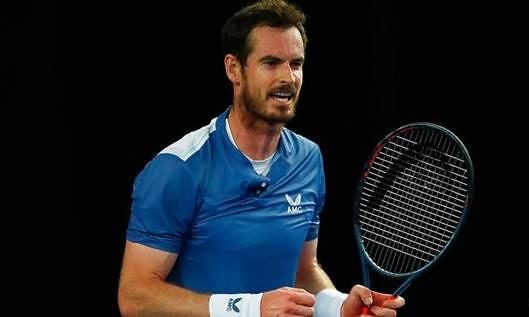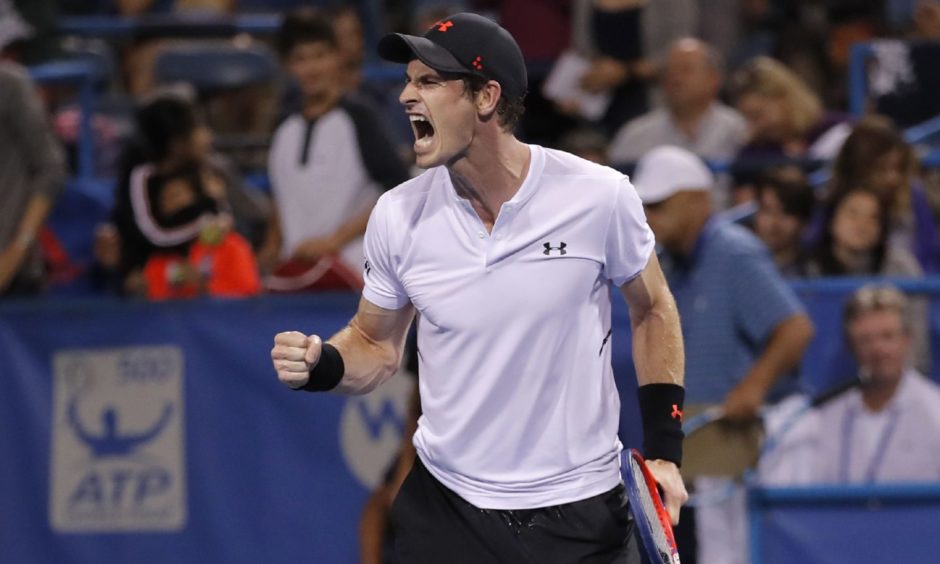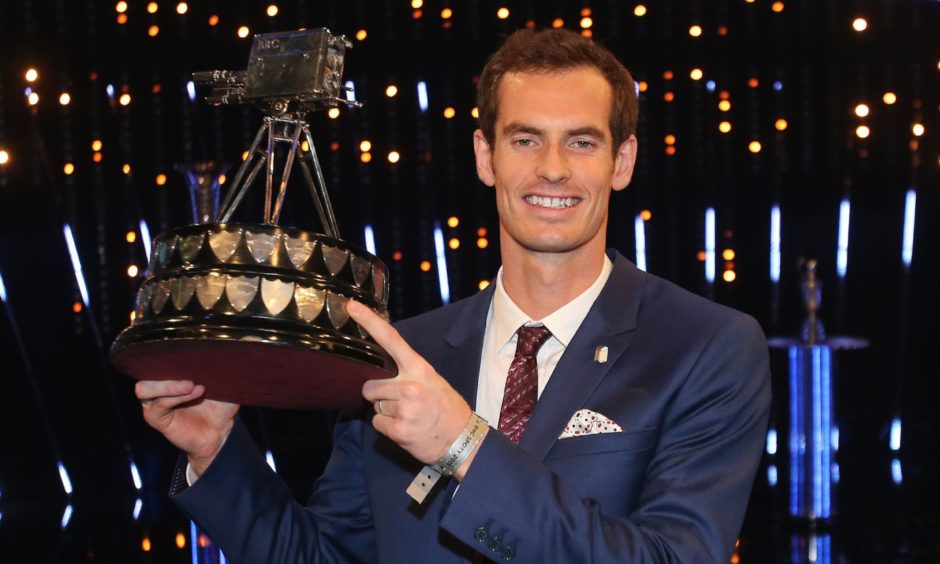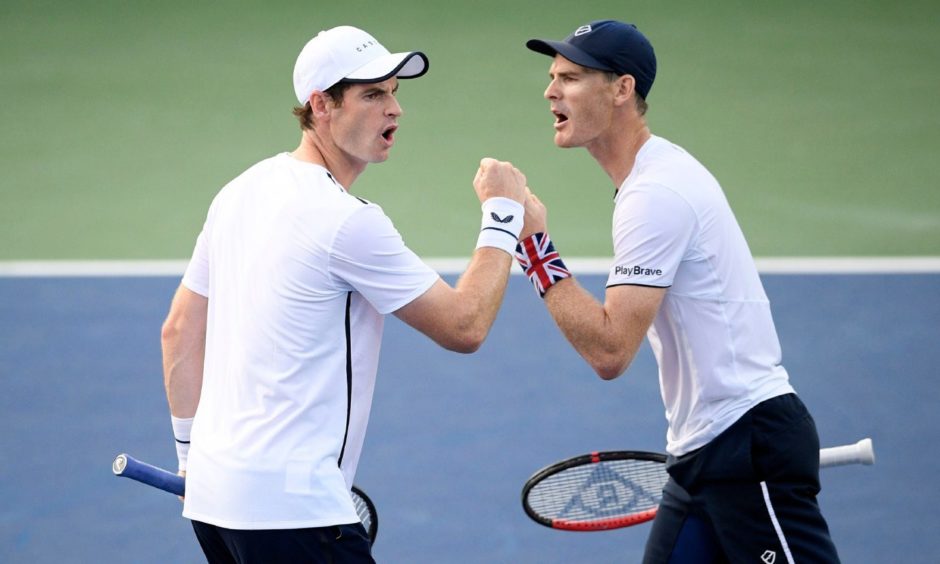One by one, the great names of tennis in the first two decades of the 21st century are starting to accept that the sole opponent they can’t overcome is Old Father Time.
Andy Murray, who turned 34 last weekend, has already announced he won’t be involved in this year’s French Open, as he prepares for another crack at Wimbledon, while Roger Federer turns 40 in August and will probably bow out after his visit to the cherished London venue.
Rafael Nadal (who is 35 next month) and Novak Djokovic (34 on Saturday), are still in redoubtable form and striving to repel the advances of their youthful counterparts in the guise of Alexander Zverev, Stefanos Tsitsipas, Daniil Medvedev and Dominic Thiem, but soon enough, the “Big Four” will have to pass on the torch to the next generation. And this is posing a question for some tennis aficionados: does Murray deserve his place in the group?
From a statistical perspective, his haul of three majors, two Olympic gold medals, a starring role in Britain’s Davis Cup victory in 2015, and period of 41 weeks as the world’s No 1 the following year, should mean the argument is a no-brainer. Yet, when a tennis magazine raised the issue last week, many fans kicked up a racket that Murray’s exploits couldn’t compare with the 58 Grand Slam titles amassed by Federer (20), Nadal (20) and Djokovic (18).
This might seem persuasive, but sport has never been purely about numbers or percentages. Yes, Federer has a sublime aesthetic quality which makes him a classical performer, while Nadal’s sinewy strength and mastery of clay has established him as an unprecedented multiple champion at Roland Garros, yet Djokovic and Murray – born within a week of each other in 1987 – have transcended traumatic childhoods to reach the summit of their pursuit.
From a personal perspective, there is another compelling reason why the Dunblane man’s career merits the highest possible praise. And that is the fact that he has always had to create his own path to success.
Prior to his arrival on the ATP circuit, the notion of a Scot serving up victory at Wimbledon seemed absurd. In British terms, no British male had triumphed at SW19 since Fred Perry in 1936. It was the same with the Davis Cup, where Andy and his brother Jamie virtually won the competition on their own. As for the Olympics, Murray’s the only member of the starry quartet to have prevailed twice – in 2012 and 2016 – and his straight-sets annihilation of Federer in the former was a magnificent display.
If it wasn’t for the injury problems which have plagued him in recent years, there is little doubt that he would have attained more plaudits, but it was significant that Murray’s recent birthday was toasted by some of the legends of the game, including Billie Jean King, who not only praised his roll of honour, but also described the Scot as an “equality champion”.
Happy birthday to 3x Grand Slam winner, the only player ever to win two Olympic Gold medals in singles, and equality champion, @andy_murray! 🎂 https://t.co/zZ7rC0v1gN
— Billie Jean King (@BillieJeanKing) May 15, 2021
Let’s remember that we had all written the epitaphs for Andy Murray’s career at the Australian Open in 2019. The anguish on the Scottish star’s face as he grappled with excruciating injury problems would be too much, or so the majority of us reckoned. He could bow out with his head high, one of the genuine greats in the sporting pantheon.
Yet Murray’s remarkable comeback at Queen’s Club that summer, where he and his doubles partner, Feliciano Lopez, not only beat the No 1 seeds in their opening match, but went on to win the tournament, highlighted that this fellow inhabits a slightly different plane from the rest of us.
He had no expectations, prior to making his return, but performed with a spring in his step, a typically whole-hearted commitment, and a panache in and around the net which suggests that he hasn’t just gained a metal hip, but been drinking from the fountain of youth during his time away from the court.
His story should provide inspiration to his compatriots, because Murray wasn’t born with a silver spoon in his mouth or a magic formula for success. On the contrary, he had to battle through barriers from the outset.
But the Scot has never been frightened of hard graft, or avoiding any kind of comfort zone. Even as a teenager, he could have hung around in Blighty and enjoyed the spotlight of being the best youngster in his homeland. Instead, he moved to Spain and methodically transformed himself into a champion.
Some might query whence he derives his motivation. After all, he is a knight with a young family and enough money to ensure he never needs to play another match in his life. But people such as Murray don’t think that way. They are driven, determined, dedicated trail-blazers, and he will be in action when the Battle of the Brits is staged in Aberdeen in December.
His pursuit of exalted standards is what has propelled him to so many achievements which others can only dream about. And though it may be implausible to imagine him being in the mix for further major accolades, he has already proved he belongs in the stratosphere of legends.



